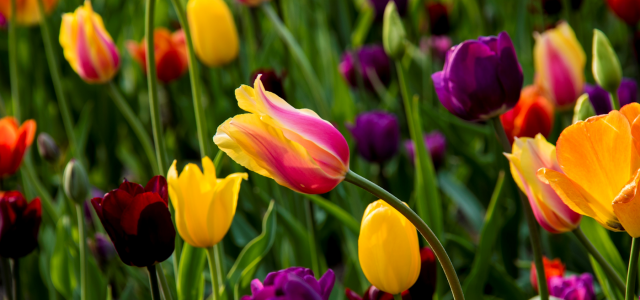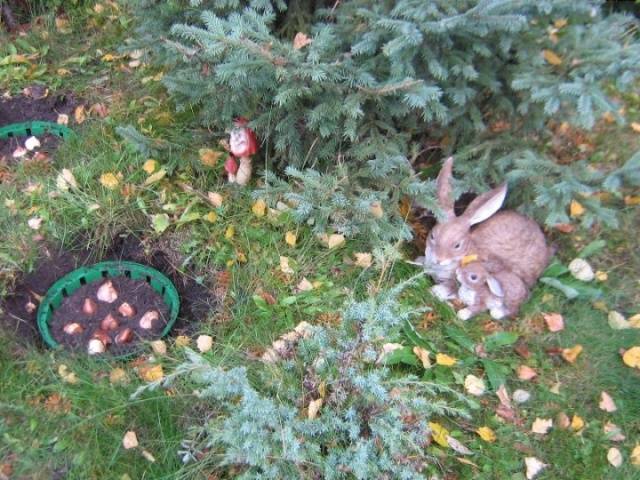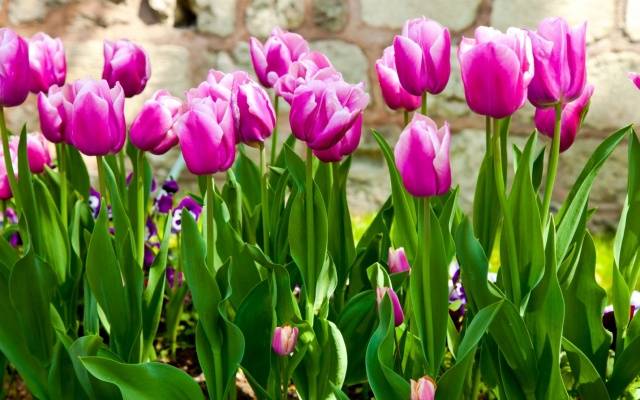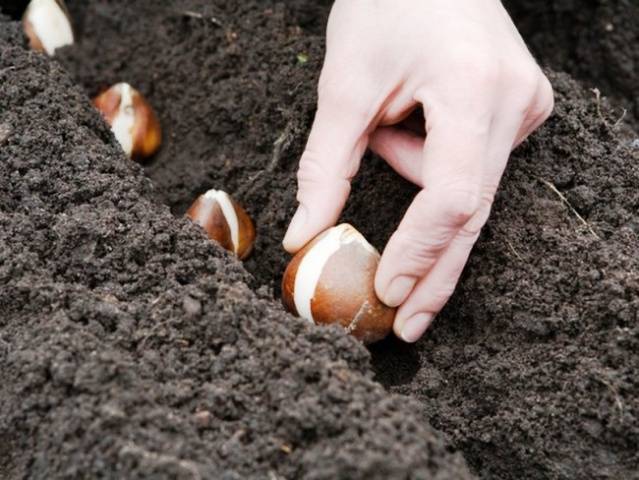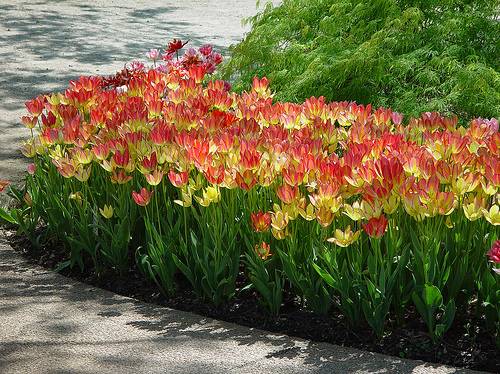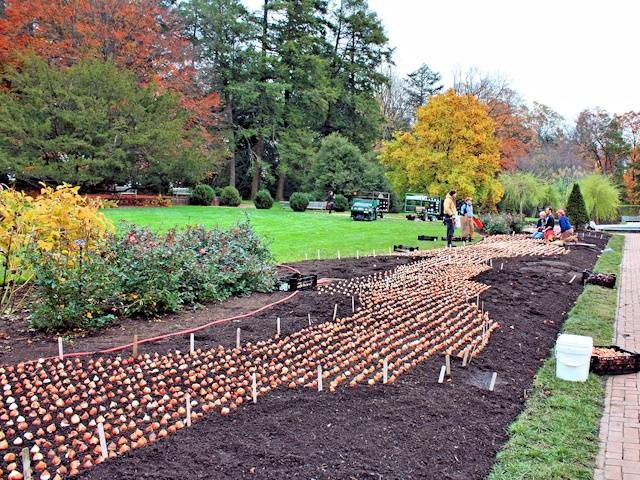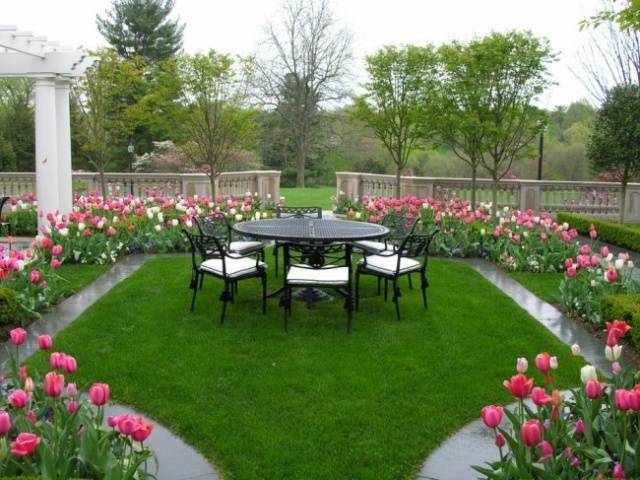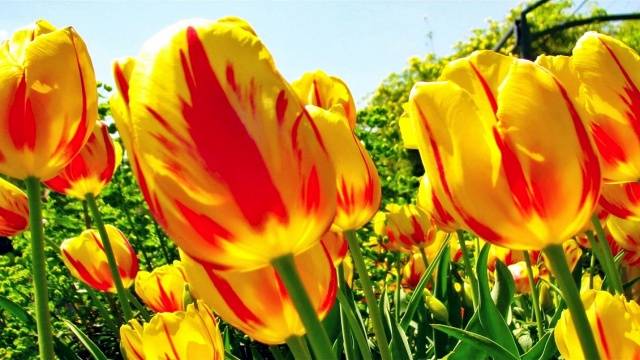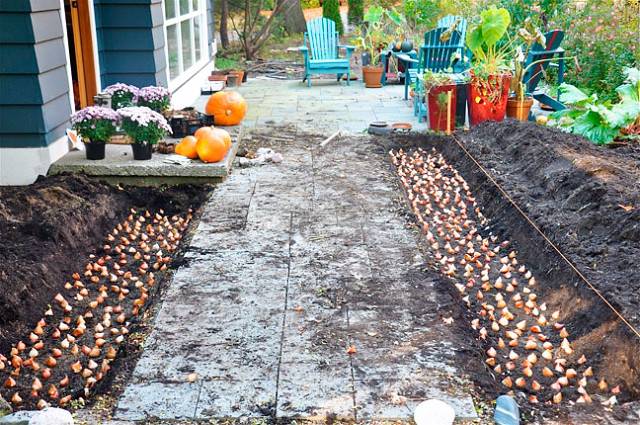Content
The blooming of tulips is associated with the onset of spring. The delicate flower is loved all over the world. We try to decorate with tulips the territories of most personal plots. Bulbous plants are planted mainly in autumn. Let's talk about how to plant tulips according to the rules in the Urals zone.
Why do you need to dig up bulbs in spring
When you start talking about the requirement to dig up the bulbs, store them and plant them again with the onset of autumn, many gardeners do not understand why this is necessary. This rule made many growers abandon the cultivation of tulips.
It is important to note that the correct cultivation approach yields excellent results. Today, many manufacturers are trying to make the work of gardeners easier. For lovers of bulbous plants, special light baskets are sold. They are inexpensive, you can put bulbs of the same type in them and do not worry that they will deteriorate when digging.
When planted in autumn, the bulb takes root. This is facilitated by the favorable cool weather, which prevails before frost. During this period, all the necessary nutrients are absorbed through the root system. In spring, the plant wakes up and blooms with special splendor, the buds are large in size.
Let's talk about how to do it right for the inhabitants of the Urals.
Tulip planting rules
Tulips are beautiful, delicate flowers. There are a huge number of options for shades of petals, with fringes, two-color, three-color. But in order to achieve lush flowering, it is necessary to properly plant. Planting tulips takes a lot of time, this is the main disadvantage of such work. No one wants tulips to not sprout or delight the gardener with flowering after hard work in the garden.
Planting tulips in the fall in the Urals should be done according to the rules. The basic requirements are as follows:
- tulips are planted in open space, where there is an abundance of sunlight;
- these flowers love fertile loose soil;
- when planting tulips, the deadlines are observed so that the root grows stronger before frost.
Let's talk about the landing rules in more detail.
Seat selection
It is always very difficult to choose a place. You need to decide on this in advance. There are several factors to consider:
- tulips love space: the distance between the bulbs is about 10 centimeters, which allows the root to feed well;
- planting depth of tulips is 15-20 centimeters;
- the place for the flower bed must be reliably protected from the winds;
- a flower bed with these flowers should be large and take its rightful place in the garden.
It is a pity that tulips do not bloom for long. If there is not enough space for them, the stem will stretch out, and the flower will be small. In some cases, you will not wait at all for flowering if you plant directly in the shade.
Soil requirements
We have already written that this flower loves rich soil. In addition, a flower bed with tulips can be arranged on poor soils, adhering to certain rules. Basic soil requirements:
- the soil must be loose;
- an abundance of sand is encouraged;
- the groundwater level should be low;
- pH neutral or slightly alkaline.
If there is an abundance of clay on the site, dig up the ground and add sand to it.If the groundwater is very close to the surface, the roots will constantly rot. You can solve this problem by building a flower bed on a hill.
Fertilizers
Even if the soil on the site is ideal for planting bulbs, top dressing will not hurt. It is recommended to use as fertilizers:
- ammonium nitrate;
- phosphorus complex fertilizer.
Top dressing should be done three times a year. In the fall, you can only add ammonium nitrate, but in the spring you will need potash and phosphorus fertilizing. They will ensure good growth of the stems and excellent flowering.
If your tulips are not distinguished by the splendor of their leaves, then complex feeding is required. It is not worth saving on this.
Planting timing
You need to plant tulips in the fall at a certain time. It depends on when frosts begin in the region. Speaking about the Urals, you need to understand that the climate in this vast territory may be slightly different.
Sometimes the weather makes its own adjustments. Autumn comes a little earlier, or, conversely, warm days are all September. In this case, you need to use the following rule:
- daytime temperature should not fall below 7 degrees;
- night temperature is below 3 degrees.
At least three weeks are allotted for rooting. According to these data, the optimal time for planting bulbs is one month before the onset of frost.
It is also not worth planting early in autumn, because after rooting, the plant can "wake up" and grow, and this is fraught with the fact that in spring the seedlings will be very weak.
Preparatory work
We will tell you how to properly plant tulips in the fall. Work begins with soil preparation. Preparatory work begins two weeks before the intended landing. Having chosen the most suitable site, the soil must be dug well to the depth of planting the bulbs, that is, by 20 centimeters. If it hasn't rained for a long time, then the soil needs to be watered.
When digging into heavy soil, sand is introduced. After that, the soil must be leveled with a rake. Avoid holes and hills.
Bulbs are also prepared for planting. You need to take either just bought in the store, or saved from the spring. All rotten and small ones are removed to the side, only large and medium ones are allowed to plant. What flowers it will give in the spring depends on the quality of the planting material.
Front planting bulbs can be soaked in a weak solution of potassium permanganate and, if you really want, sprinkle with a growth indicator. Everything, the material is ready for planting!
Planting process
The most time-consuming process begins - planting. Having chosen the place and the right time, you can get to work. When planting flowers, place medium-sized bulbs 15 centimeters deep and large bulbs 20 centimeters deep. Extreme precision is not important in this matter.
If a composition is created in the form of a flower bed, then it is necessary to plant large bulbs in the center, and medium ones at the edges. The average flower will be smaller, and the stem will be shorter. You also need to maintain a certain distance between the bulbs themselves. It is 6-10 centimeters. The distance also depends on the size of the bulbs.
For those who use tulips of different varieties in flower beds, I would like to remind you that they may have different flowering times. It is not necessary to plant them randomly. In flower beds, tulips are most often planted in a checkerboard pattern. If tulips border the path, plant them in a pre-dug flat trench.
The planting process itself is simple.
Dig a hole or trench of a certain size. A tulip bulb is spread in it with the rhizome down. You do not need to press down on it, as this can damage the thin roots. Then the trench or hole is covered with earth. After planting all the bulbs, the land is carefully leveled. If the weather is sunny and rain is not expected, you can lightly water the soil.
Digging up dead tulips
In spring, flower beds with tulips are pleasing to the eye.This flower rightfully occupies one of the main places in the gardens of Russians. The abundance of colors and splendor of flowering are the advantages of tulips. Among the shortcomings is the short flowering period, but this applies to all spring beauties. For those who are still new to this matter, it is important to know the basic rules of care.
Before flowering in early spring, fertilizers are applied to the soil. Faded tulips are cut so that they do not spoil the appearance. After flowering, you will need to wait a while for the foliage to fall off before digging up the bulbs.
If the gardener has set tags for different varieties in advance in the fall, it will be convenient for him to dig up and sort the plants. Place them in dry baskets, boxes, or other containers for easy storage.
Storing the bulbs
In order for the bulbs to be well preserved from spring to autumn, it is important to follow simple rules:
- planting material is stored in a pure form without roots, lumps of earth and leaves;
- before storing them, they must be dried;
- you can soak the bulbs in a weak solution of potassium permanganate before drying;
- it is good to store them in dry sawdust, which will absorb any excess moisture.
The storage conditions are also pretty simple:
- temperature regime - from +20 to +25 degrees;
- by autumn, the temperature is reduced to + 15 degrees;
- the room must be ventilated and the humidity must not rise.
Winter care
Many gardeners ask whether it is necessary to care for the tulips planted in the Urals in the cold season. As a rule, such care is not required, but we recommend that gardeners in the Middle Urals still insulate the bulbs.
This can be done with spruce branches or snow. If the frosts are strong for a long time, you can cover the landing site with a snowdrift. So, bulbs overwinter better.
As a rule, tulips winter well and in spring they delight the eye with their delicate bright flowers. Do not deny yourself the pleasure of planting them according to all the rules!
